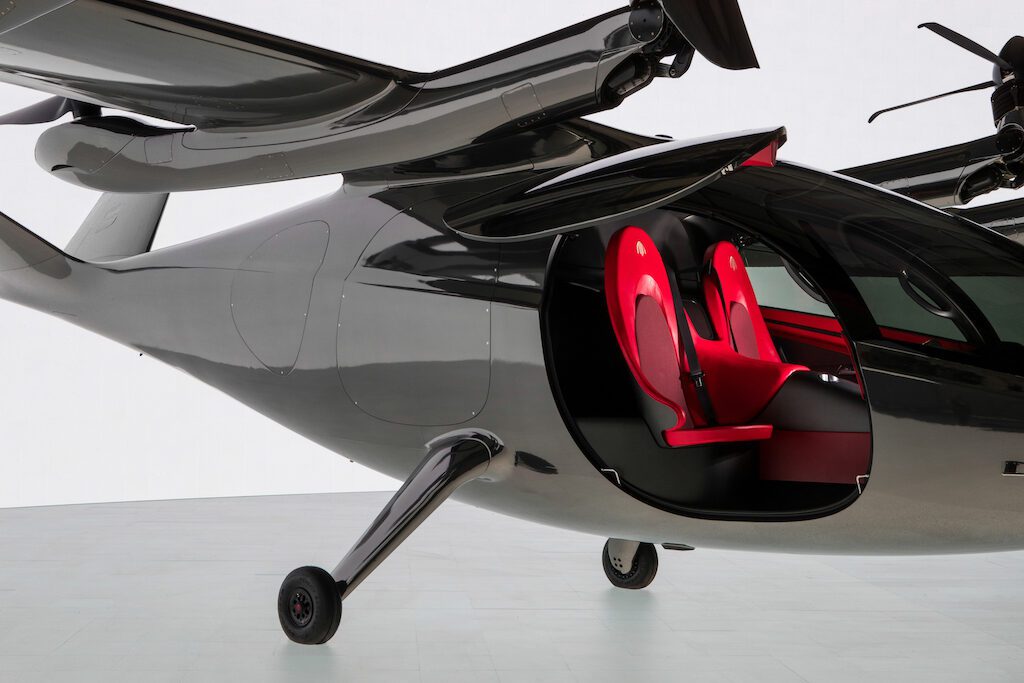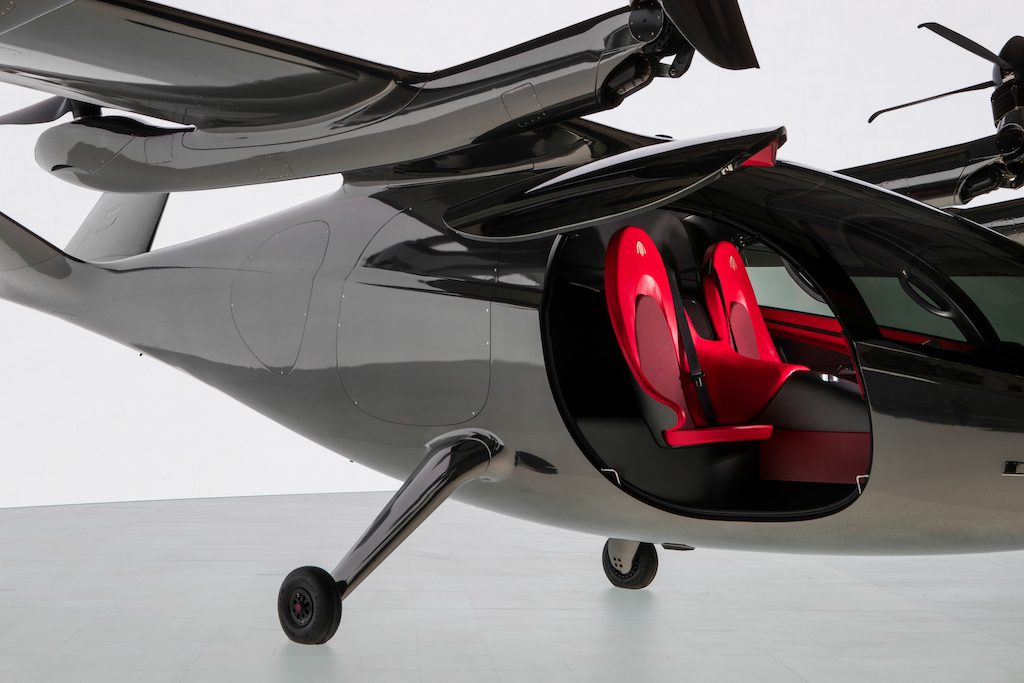Archer Aviation VP of Design Talks Developing a Human-centric eVTOL


Avionics International recently caught up with Archer Aviation Vice President of Design and Innovation Julien Montousse to discuss his vision for the exterior and interior design elements of the passenger-carrying eVTOL they want to launch by 2024. Pictured here, is the two-seater Maker eVTOL demonstrator unveiled by Archer in June. (Archer Aviation)
With just over two years remaining until Archer Aviation’s goal of having a four-passenger electric vertical takeoff and landing (eVTOL) ready for a commercial launch by 2024, the California-based startup will need to make some key decisions about the design of its aircraft over the next six months, Julien Montousse, Vice President of design and innovation at Archer told Avionics International during a recent interview.
Last month, Archer announced two key eVTOL development program milestones, including receiving its a G-1 issue paper from the Federal Aviation Administration (FAA) outlining a path to certification and a merger with Atlas Crest Investment Corp. that made it a publicly traded company on the New York Stock Exchange (NYSE). Montousse joined Archer in November 2020 after serving as the head of design for Mazda’s North American operations for several years, but notes that his experience as a consultant on the design of the SpaceX Dragon 2 cabin sparked his interest in aerospace and made him jump at the opportunity to work with Archer.
“We have a short timeframe to bring this aircraft to market, with our goal being 2024, and that means that a lot of the design decisions are going to have to happen over the next six months,” Montousse said. “There will still of course be some smaller tuning, but in terms of the core architecture itself, and the overall understanding of how it will be shaped inside and outside—a lot of that will be decided over the next six months. We’re going to try to come as close as possible over the next six months to have the A-side—the A-side is everything you see and touch, the B-side is everything you don’t see or touch—decided and finalized.”
The design that Archer ultimately decides upon will most likely have noticeable exterior and interior differences from the two-passenger Maker eVTOL demonstrator that they unveiled in June. While the passenger-carrying capacity of the aircraft could change, Montousse said that as of now they’re initially sticking to the configuration that was announced in February along with their United Airlines partnership and purchase order, a design for one pilot and four passengers.
Montousse said that another key focus for the Archer design team right now is ensuring that the overall design is simplistic and visually appealing to future passengers. He said the team has already come up with a number of design improvements on the Maker.

Montousse said he believes passengers should be able to enter and exit Archer’s eVTOL hands-free. (Archer Aviation)
“If you look at the Maker demonstrator, and even some of the designs of our competitors, as an aircraft it is still very complex in its assembly, its construction and where you have a typical fuselage to wing box integration and rotors that are split from the wings. Visually, it still appears as a very complex product,” Montousse said. “One of the key goals for us visually is to simplify the aircraft and that really requires a focus on integration. How do we integrate all of those key components in a way that is more digestible to the eye?”
Archer’s design team is currently working on those improvements with the use of computer-aided design (CAD) as well as virtual reality-based models that show how different eVTOL models would appear in operation or how a vertiport could support one design versus another. According to Montousse, three of the principles guiding their considerations for design changes are operational efficiency, payload and FAA certification requirements.
Lessons learned from the cabin interior design and materials featured on the majority of today’s smaller fixed and rotary wing aircraft will also be incorporated into Archer’s first production-ready eVTOl as well.
“If you think about some of the smaller business aircraft flying right now, the majority of people have to crouch down when they get inside or grab a handle and hoist themselves into the cabin. I think that your connection to the aircraft should be as simple as possible. You should be able to get in and get out completely hands-free. In a way, we’re going to be competing with cars, and people that are accustomed to getting into and out of their cars in a fluid manner. We should expect that same desire for such an experience on our aircraft. No one wants to crawl into a small space and be crammed in anymore,” Montousse said.
There will also be a focus on ensuring there is space between seats within the cabin to allow passengers to have more privacy in the event that they could be sharing the air taxi with strangers. Creating a more interactive passenger experience is also a desire for Montousse’s team, as they’re currently studying the use of retina capture and holographic displays as windows that could provide passengers with information about points of interest within their flight as they look outside.
“Even if its just a 10-minute flight, we want that to be an amazing 10 minutes of comfort. We know passengers will be fairly constrained, you won’t have the space to get up and go to another seat or stand up in the aisle in between. You’re going to be sitting in that space for 10 minutes and we want it to be as comfortable as possible. That is extremely important,” Montousse said.
In a recent blog post, Archer provided a comparison of its Maker demonstrator eVTOL’s 45 A-weighted decibels (dBA) noise output to other forms of transportation, with the company claiming it will be “1,000 times” quieter than a traditional helicopter. The 45 dbA noise level is based on Maker flying overhead at 2,000 feet.
As the company moves closer to finalizing the design of its production eVTOL, Montousse said that his team is evaluating the use of noise-cancelling technology to reduce the sound of rotors to the passengers in the cabin as well. And while Archer desires a simplistic eVTOL design, Montousse said the goal is still to produce a design that is “sexy, progressive and pushes the world into this new era of transportation.”
“We want it to perform aerodynamically and structurally of course, but we’re also focused on making a product that is extremely sexy and progressive. When I was at Mazda, we really tried to bring to life a product with an appealing design. This is something that I brought with me to aerospace and I my quest is to bring emotion into a world that is 100 percent mathematical. When people see it, it won’t look 100 percent mathematical,” Montousse said.
The post Archer Aviation VP of Design Talks Developing a Human-centric eVTOL appeared first on Aviation Today.
—————
Boost Internet Speed–
Free Business Hosting–
Free Email Account–
Dropcatch–
Free Secure Email–
Secure Email–
Cheap VOIP Calls–
Free Hosting–
Boost Inflight Wifi–
Premium Domains–
Free Domains






